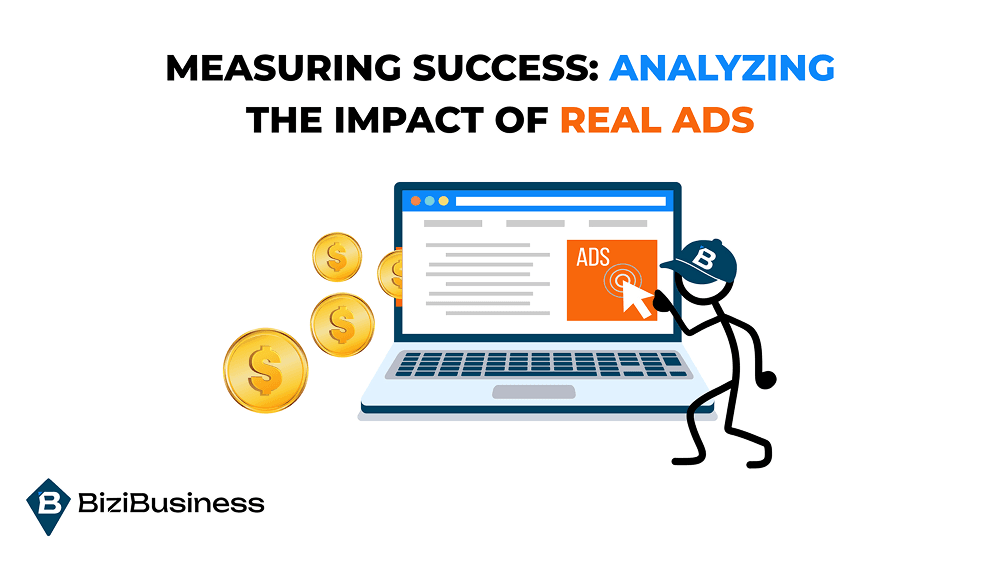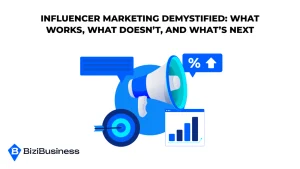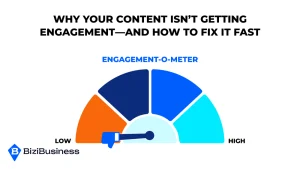BiziTopics
Why ‘Ad-Realness’ Beats Perfection: Lessons from Influencer Marketing
BiziBusiness
Jul 8, 2025
10 min read
Glossy, picture-perfect influencer ads are losing their charm. Audiences aren’t buying into perfection anymore—they want authenticity. They crave content that feels genuine, relatable, and real.
That’s why successful influencer campaigns now embrace ad-realness.
It’s not about flawless setups or scripted messages—it’s about showing personality, imperfections, and real excitement.
When influencers act naturally, it feels less like selling and more like sharing.
Why does this work?
People are tired of being sold to—they want connections, not commercials.
In this article, we’ll explore why ad-realness wins in influencer marketing, how brands can leverage it, and why embracing imperfections leads to stronger connections and higher engagement.
Let’s dive in.
The Evolution of Influencer Marketing
In the early days, influencer marketing was all about perfection. Highly curated feeds, flawless images, and scripted captions dominated social media. Brands wanted their products presented in the most polished way possible. And back then, it worked.
But times have changed.
Audiences grew tired of unrealistic portrayals. The rise of platforms like TikTok and Instagram Stories introduced a new era—one where users craved authenticity over perfection. Influencers who shared unfiltered moments, daily struggles, and real opinions started gaining massive traction.
The shift became clear:
People wanted influencers they could relate to, not just admire.
They wanted to see the real person behind the brand partnerships. This change gave rise to the concept of ad-realness—content that feels natural, honest, and human.
Why Did This Shift Happen?
Simple: Audiences became more savvy and skeptical. They could spot inauthentic ads from a mile away. The polished, too-good-to-be-true content felt less trustworthy, while raw, relatable posts seemed more honest.
Influencers who embraced this trend not only gained more followers but also built deeper connections with their audience. Brands that adapted to this new wave of realness saw higher engagement and more loyal customers.
Today, authenticity isn’t just a trend—it’s the new standard. Brands looking to succeed with influencer marketing need to focus on real connections rather than perfectly curated content.
Why ‘Ad-Realness’ Works: The Psychology Behind It

Audiences today connect with authenticity. When content feels real, it builds trust. Trust is a key factor in marketing, and influencer campaigns that embrace ad-realness consistently outperform highly polished ads.
Why Realness Resonates:
- Relatability Breeds Trust: When influencers show their quirks, flaws, or everyday moments, it feels natural. Instead of a polished script, followers see genuine behavior. This approach makes influencers more approachable and credible.
- People are drawn to those who appear authentic, which is why unscripted, spontaneous content often sparks higher engagement.
- A casual mention of a favorite product during a routine feels more trustworthy than a staged endorsement.
- Perfect Feels Fake: Overly curated content can come across as insincere. When everything looks too perfect, audiences may suspect that the message is forced or staged.
- Social media users are more critical now and can quickly sense when content lacks authenticity.
- When influencers present themselves as flawless, it can create a disconnect, reducing the impact of the message.
- Emotion Drives Engagement: Authentic content evokes emotions. Whether it’s humor, honesty, or vulnerability, people are more likely to respond to something that feels real.
- Personal stories, relatable struggles, or candid reactions prompt audiences to like, comment, and share.
- Emotional connections lead to stronger brand loyalty, as people tend to support influencers who seem genuine.
- The Human Factor: Audiences form connections with individuals, not brands. When influencers present products in a personal context, it humanizes the message.
- Sharing personal experiences or demonstrating a product in a natural setting makes the ad feel like a recommendation rather than a sales pitch.
- This approach makes audiences feel included rather than targeted.
Supporting Data:
Studies show that authentic, story-driven content often achieves higher engagement compared to highly produced ads.
Consumers increasingly value transparency and honesty, preferring to see real-life experiences rather than scripted perfection.
- 86% of consumers prioritize authenticity when choosing brands to support.
- Studies show that personalized videos are 35% more likely to retain viewers than non-personalized content.
- Influencers known for their authenticity often have higher engagement rates, regardless of their follower count.
Ad-realness builds lasting connections by respecting the audience’s desire for honesty. Campaigns that prioritize relatable and human content foster deeper engagement and brand loyalty.
Next, we’ll look at why perfection can actually harm influencer marketing efforts.
The Pitfalls of Perfect Influencer Ads

Highly polished influencer ads can look impressive, but they don’t always deliver results. When content feels overly curated or staged, it can actually hurt the campaign.
Why Perfect Isn’t Always Better:
- Decreased Credibility: When an ad looks too perfect, audiences may doubt its sincerity. A flawless setup can make it seem like the influencer is just following a script, rather than genuinely endorsing the product.
- Overproduced content can come across as insincere, making viewers question whether the influencer truly likes the product or is just being paid to promote it.
- Authenticity resonates more because it shows the influencer’s real experience, which is far more convincing.
- Lower Engagement: Content that feels scripted or overly polished often lacks spontaneity, making it less relatable.
- Audiences are more likely to engage with content that feels spontaneous or behind-the-scenes, rather than something that feels like a commercial.
- When an influencer looks too perfect, followers might feel distanced rather than connected, leading to fewer likes, comments, and shares.
- Missed Connection: The more an ad feels like traditional advertising, the more likely it is to be ignored. Viewers are used to scrolling past content that looks like a polished ad.
- Realness builds rapport. If the ad feels too rehearsed, the message doesn’t hit home.
- Campaigns that feel overly brand-driven rather than influencer-driven often fail to leverage the personal touch that makes influencer marketing effective.
What Audiences Want Instead:
- Content that feels genuine and approachable.
- Ads that fit naturally into the influencer’s usual style.
- Moments that seem spontaneous rather than rehearsed.
Embracing imperfections doesn’t mean sacrificing quality. It means allowing some realness to shine through, even in sponsored content. Viewers are more likely to trust influencers who stay true to their personal style, even when promoting a product.
How to Embrace ‘Ad-Realness’ in Your Campaigns

Building ad-realness into your influencer marketing strategy means creating content that feels natural, relatable, and honest. It’s not about sacrificing quality—it’s about allowing genuine moments to come through.
1. Choose the Right Influencers:
Not every influencer can pull off ad-realness. Look for those who already have a reputation for being authentic.
- Prioritize Engagement Over Follower Count: Influencers with smaller but highly engaged audiences often build stronger connections.
- Check Content Style: Review their past posts. Do they share personal stories? Are their endorsements natural and believable?
- Alignment Matters: Choose influencers whose personality matches your brand values. Authenticity can’t be forced.
2. Encourage Natural Storytelling:
Give influencers creative freedom to present your product in a way that fits their usual content style.
- Avoid Scripted Lines: Instead, share key points and let them speak in their own words.
- Show Real-Life Use: Whether it’s a casual mention during a vlog or a spontaneous reaction, encourage them to incorporate your product naturally.
- Behind-the-Scenes Content: Audiences love seeing the process, not just the final result. Allow influencers to include the unpolished moments.
3. Balance Branding with Authenticity:
While it’s tempting to maintain strict control over messaging, being too rigid can make the content feel unnatural.
- Flexible Guidelines: Provide a framework but encourage influencers to personalize the message.
- Genuine Reactions: Instead of insisting on perfect product shots, let influencers share their honest opinions and experiences.
- Context Matters: Integrate the product into the influencer’s real life rather than staging a promotional setup.
4. Encourage Spontaneity:
Planned spontaneity sounds like a contradiction, but it works when done right.
- Candid Moments: Let influencers film their first impressions rather than rehearsing. Real reactions resonate more.
- User-Generated Content: Challenge influencers to involve their audience—like asking followers to share their own experiences.
- Less Editing: Minimal editing makes the content feel raw and unfiltered, keeping it closer to reality.
Practical Tips:
- Brief, Don’t Script: Share the campaign goals but let influencers decide how to deliver the message.
- Focus on Context: Instead of a standalone ad, integrate the product into a real moment—like a daily routine or an unboxing.
- Be Open to Imperfections: Sometimes, a blooper or a less-than-perfect shot makes the content more relatable.
Audiences appreciate when brands allow influencers to stay true to themselves. By emphasizing ad-realness, you create campaigns that feel more genuine and less commercial.
The result? Stronger connections, higher engagement, and increased brand loyalty.
Next, we’ll look at how to measure the success of ad-realness in your influencer marketing efforts.
Measuring Success: Analyzing the Impact of Real Ads

Creating authentic influencer ads is one thing—proving their success is another. Measuring the impact of ad-realness requires looking beyond basic metrics. It’s about understanding how audiences react to genuine content versus polished, scripted campaigns.
1. Track Engagement Metrics:
Genuine content often sparks more interactions.
- Likes, Comments, Shares: High numbers indicate that the ad resonated emotionally. Real reactions suggest the audience felt a connection.
- Sentiment Analysis: Look at the tone of comments. Are followers reacting positively to the authenticity, or do they feel it’s still too staged?
- Save and Bookmark Rates: If audiences save the post, it shows they found the content valuable or inspiring.
2. Monitor Conversion Metrics:
Even real ads should drive results.
- Click-Through Rate (CTR): An increase shows that the message felt compelling enough to prompt action.
- Conversion Rate: Measure how many viewers actually completed the desired action—like signing up, purchasing, or visiting a landing page.
- Attribution Tracking: Use UTM parameters to see whether the traffic directly came from the influencer’s content.
3. Evaluate Audience Growth:
Authentic content often attracts new followers to both the influencer and the brand.
- Follower Increase: A spike after the campaign indicates that audiences valued the influencer’s take on your product.
- Profile Visits: Track whether the ad prompted people to check out your brand’s social pages.
- Email Sign-Ups or Subscriptions: Real ads can encourage more people to join your community, as they feel more personally connected.
4. Measure Brand Sentiment and Loyalty:
Authenticity isn’t just about getting clicks—it’s about building trust.
- Brand Mentions: Monitor how often your brand gets mentioned positively after an influencer campaign.
- Repeat Purchases: If customers who came through influencer content keep buying, it shows the campaign built lasting loyalty.
- Survey Feedback: Directly ask your audience how they perceived the campaign—did it feel genuine and relatable?
5. Compare Against Traditional Ads:
To prove the value of ad-realness, compare the results with previous campaigns that used more polished, scripted content.
- Engagement Comparison: See if real ads consistently outperform in likes, shares, and comments.
- Cost Per Engagement: If raw content costs less while driving higher interactions, it’s a clear win.
- Retention Rates: Real ads tend to stick longer in people’s minds, so track how long your brand stays relevant after the campaign.
Authenticity Is the New Perfection
Today’s audiences don’t want perfection—they want realness. Polished, scripted influencer ads feel fake and forced. Authentic content, on the other hand, builds trust and connection.
Brands that embrace ad-realness see higher engagement because they’re giving audiences what they actually crave: honesty. Instead of pushing perfection, let influencers show their true selves.
The result? Campaigns that feel less like ads and more like real recommendations.
Stop chasing flawless. Start being real. Your audience—and your results—will thank you.
Subscribe to Newsletter
Unlock your creativity and stay up to date on marketing tips





